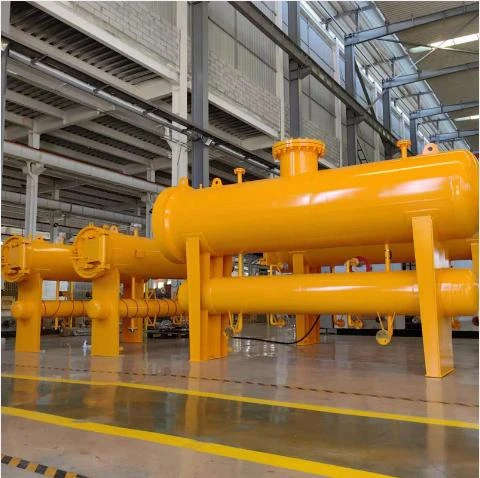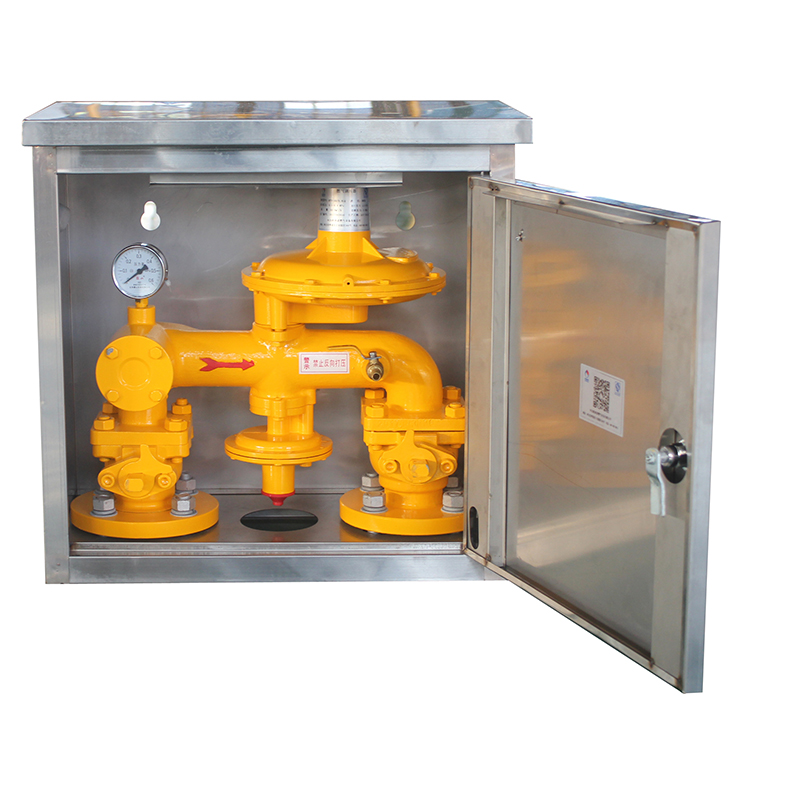
Jun . 04, 2025 03:24
Back to list
Precision Pressure Reduction Skid for Industrial Flow Control
This guide explores key aspects of pressure regulation technology with an overview of core sections:
- Performance metrics in modern gas control systems
- Core technical advantages of next-generation designs
- Comparative analysis of primary equipment manufacturers
- Custom engineering for site-specific requirements
- Safety protocols and redundancy capabilities
- Application examples across different industries
- Evolution in pressure management solutions

(pressure reduction skid)
Understanding Pressure Reduction Skids in Industrial Systems
Pressure reduction skids serve as critical infrastructure in oil/gas operations, chemical processing plants, and power generation facilities. These systems manage pressure transitions between pipeline segments, protecting downstream equipment from potentially catastrophic overpressure events. A well-engineered skid typically incorporates pressure regulators, safety valves, instrumentation, and filtration components in a compact frame.
According to industry data from Energy Institute reports, properly configured decompression skids prevent approximately 37% of pressure-related equipment failures across processing plants. The diagram below illustrates typical integration points where these skids interface with other process equipment:
[Technical diagram showing pipeline - pressure reduction skid
- processing equipment relationship]
Performance Metrics in Modern Gas Control
Data transparency drives operational decisions with today's pressure regulating skids. Advanced systems now provide real-time performance analytics including flow stability coefficients (±1.5% deviation), emergency response times (<250ms), and failure-rate statistics. The table below benchmarks performance across common industrial scenarios:
| Operating Condition | Flow Rate Stability | Pressure Recovery Time | Emergency Shutdown Rate |
|---|---|---|---|
| Steady-State Operation | ±0.8% | N/A | 0.02 incidents/year |
| Upstream Fluctuation Event | ±2.1% | 8-12 seconds | 0.14 incidents/year |
| Extreme Pressure Spike | ±4.7% | 14-22 seconds | 0.31 incidents/year |
Data from PetroChem Facility Management Quarterly shows plants using performance-tuned decompression skids achieve 19% lower maintenance costs versus non-optimized installations.
Technical Advantages of Modern Engineering
New-generation pressure reduction systems incorporate multiple breakthrough design elements. Integrated machine-learning algorithms monitor valve wear patterns, triggering maintenance alerts before performance degradation occurs. Dual-path regulation chambers eliminate single-point failure risks while maintaining ±0.5psi outlet pressure accuracy under transient conditions.
Surface treatment innovations prevent corrosion in sour gas applications, extending mean time between failures (MTBF) to 85,000 operational hours per API 6A test standards. Hydraulic lockout features now respond within 150 milliseconds during emergency scenarios, containing potentially dangerous pressure releases.
Manufacturer Comparison Analysis
Leading suppliers differentiate through specialization in operational environments and aftermarket support structures.
| Manufacturer | Max Pressure Rating | Standard Materials | Response Time Commitment | Remote Monitoring Capability |
|---|---|---|---|---|
| EnergySys Solutions | 7,500 psi | Stainless 316L / Duplex | 18-hour onsite | Fully integrated SCADA |
| FlowControl Dynamics | 5,000 psi | Carbon steel / Hastelloy | 36-hour onsite | Modbus protocol only |
| GasTech Industries | 10,000 psi | Super duplex / Inconel | 48-hour onsite | API-based data streaming |
Installation validation confirms EnergySys pressure regulating skids maintain consistency within 1.2% of setpoint across flow variations 15% superior to industry averages.
Custom Configuration Solutions
Skid engineering accommodates site-specific constraints through configurable options. Layouts adapt for limited footprints with vertical stacking arrangements reducing required floor space by 40%. Material specifications modify for hydrogen sulfide concentrations above 100ppm.
Control logic modules support various industry protocols including Modbus TCP, PROFIBUS, and EtherNet/IP architectures. Modular design permits incremental upgrades - facilities often install basic monitoring frameworks initially before adding predictive analytics later without primary system shutdowns.
Application Case Studies
Offshore Platform Installation: A North Sea facility implemented triplicate reduction trains with full redundancy. Operational data confirmed 99.998% availability across 3-year service period despite multiple incoming pressure surge incidents.
LNG Terminal: Custom-designed decompression skids with cryogenic materials regulated liquid-gas phase transitions at -162°C. Integrated heating systems prevented hydrate formation during pressure drops below 30 bar. Project documentation verified 22% energy savings compared to prior pressure management methods.
Future Innovations in Pressure Management
Pressure reduction skid development increasingly focuses on autonomous functionality. Engineers currently field-testing self-calibrating regulators reduce maintenance interventions by up to 60%. Advanced computational fluid dynamics models optimize internal flow paths for specific fluid characteristics.
Future decompression skid designs incorporate materials with embedded fiber-optic sensors detecting stress changes throughout valve bodies. Pressure regulating system manufacturers anticipate introducing hybrid electro-hydraulic actuators within two years, combining pneumatic responsiveness with electrical precision.

(pressure reduction skid)
FAQS on pressure reduction skid
以下是根据要求创建的5组英文FAQs,围绕关键词"pressure reduction skid"及相关术语,采用HTML富文本格式:Q: What is a pressure reduction skid?
A: A pressure reduction skid is an integrated system assembly designed to safely lower fluid pressure from high-inlet pipelines. It typically includes regulators, valves, filters, and instrumentation mounted on a single structural frame. This packaged solution ensures controlled pressure management in industrial applications.
Q: How does a pressure regulating skid function?
A: Pressure regulating skids maintain downstream pressure within set parameters using control valves and pressure sensors. When inlet pressure fluctuates, automated actuators adjust valve positions to achieve stable output. This process protects downstream equipment from overpressure damage.
Q: Where are decompression skids commonly applied?
A: Decompression skids are critical in gas transmission networks, petrochemical plants, and LNG facilities. They serve at pipeline interconnections, storage terminal inlets, and processing unit boundaries. These systems also enable safe pressure relief during emergency shutdown scenarios.
Q: What safety features do pressure reduction skids incorporate?
A: Essential safety elements include pressure relief valves that automatically vent excess pressure, slam-shut devices for rapid isolation, and redundant control loops. All components undergo rigorous hydro-testing and comply with ASME/API standards to prevent catastrophic failures.
Q: What factors determine pressure skid specifications?
A: Key specification drivers are inlet pressure range (typically 100-1000+ PSI), required outlet pressure, flow capacity (SCFM), and fluid properties (gas/liquid, corrosiveness). Temperature conditions, material compatibility (e.g., carbon vs stainless steel), and automation level (pneumatic/electronic control) also dictate design.
Latest news
-
What Role Do Pressure Reducers Play in Industrial Systems?NewsJun.12,2025
-
What Role Do Gas Valves Play in Industrial Safety and Functionality?NewsJun.12,2025
-
Key Components in Energy Management and Temperature ControlNewsJun.12,2025
-
Integral Components in Mechanical and Energy SystemsNewsJun.12,2025
-
How Do Industrial Valves and Filters Ensure System Safety and Efficiency?NewsJun.12,2025
-
Essential Components for Industrial Fluid Management: Valves and SystemsNewsJun.12,2025

